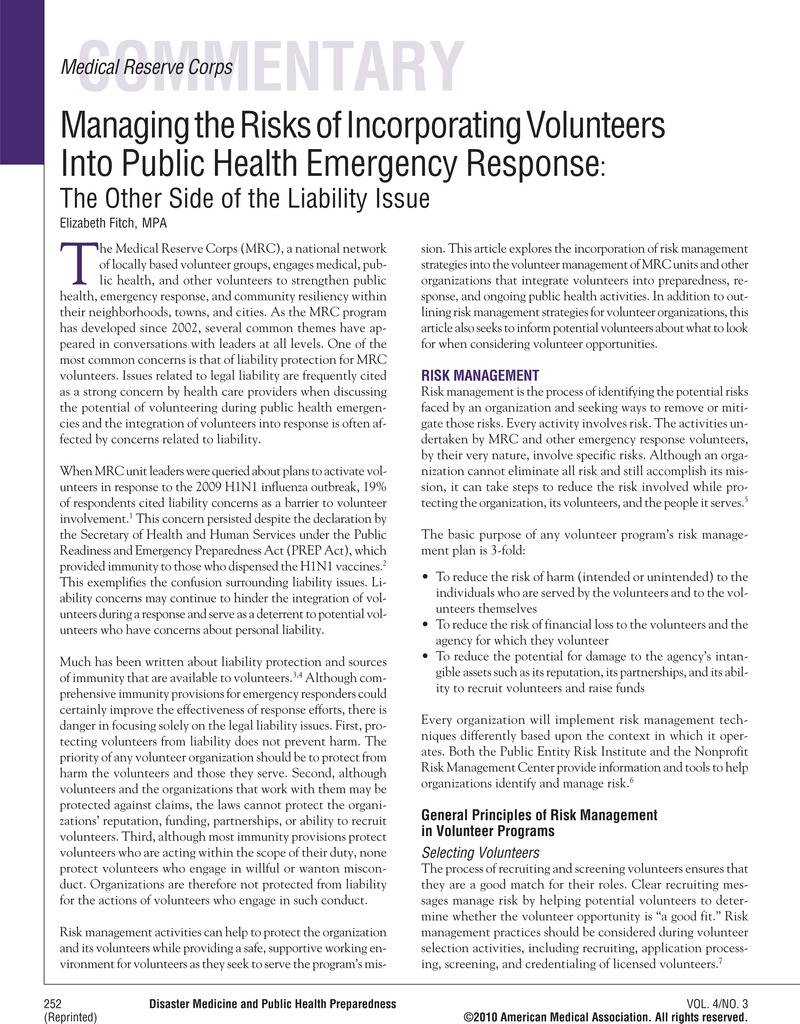Crossref Citations
This article has been cited by the following publications. This list is generated based on data provided by Crossref.
Sauer, Lauren M.
Catlett, Christina
Tosatto, Robert
and
Kirsch, Thomas D.
2014.
The Utility of and Risks Associated With the Use of Spontaneous Volunteers in Disaster Response: A Survey.
Disaster Medicine and Public Health Preparedness,
Vol. 8,
Issue. 1,
p.
65.
Altman, Robin L.
Santucci, Karen A.
Anderson, Michael R.
McDonnell, William M.
Fanaroff, Jon Mark
Bondi, Steven A.
Narang, Sandeep K.
Oken, Richard L.
Rusher, John W.
Scibilia, James P.
Scott, Susan M.
and
Sigman, Laura J.
2019.
Understanding Liability Risks and Protections for Pediatric Providers During Disasters.
Pediatrics,
Vol. 143,
Issue. 3,
Birch, Sarah
and
Dorosz, Emily J.
2020.
Nursing Management of Pediatric Disaster.
p.
389.
Daddoust, Leila
Asgary, Ali
McBey, Kenneth J.
Elliott, Steve
and
Normand, Alain
2021.
Spontaneous volunteer coordination during disasters and emergencies: Opportunities, challenges, and risks.
International Journal of Disaster Risk Reduction,
Vol. 65,
Issue. ,
p.
102546.
Chen, Sheng-Qun
and
Bai, Jie
2023.
Data-driven decision-making model for determining the number of volunteers required in typhoon disasters.
Journal of Safety Science and Resilience,
Vol. 4,
Issue. 3,
p.
229.
Malmin, Natasha Prudent
and
Nostrand, Elizabeth Van
2024.
Comparison of Laws that Impact Volunteer Response in Three Disaster-Prone Southeastern States.
Journal of Public Health Management & Practice,
Vol. 30,
Issue. 5,
p.
E247.



